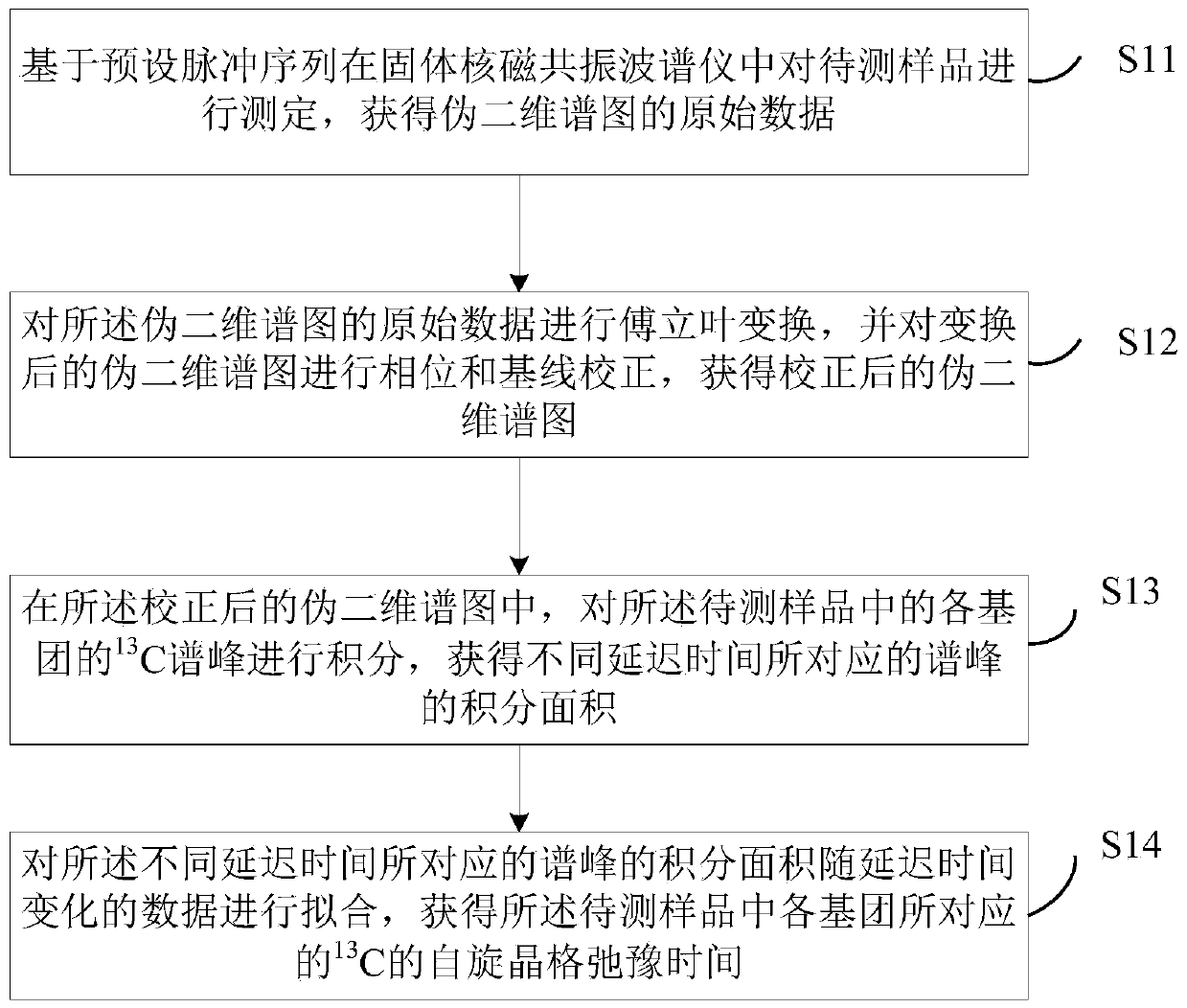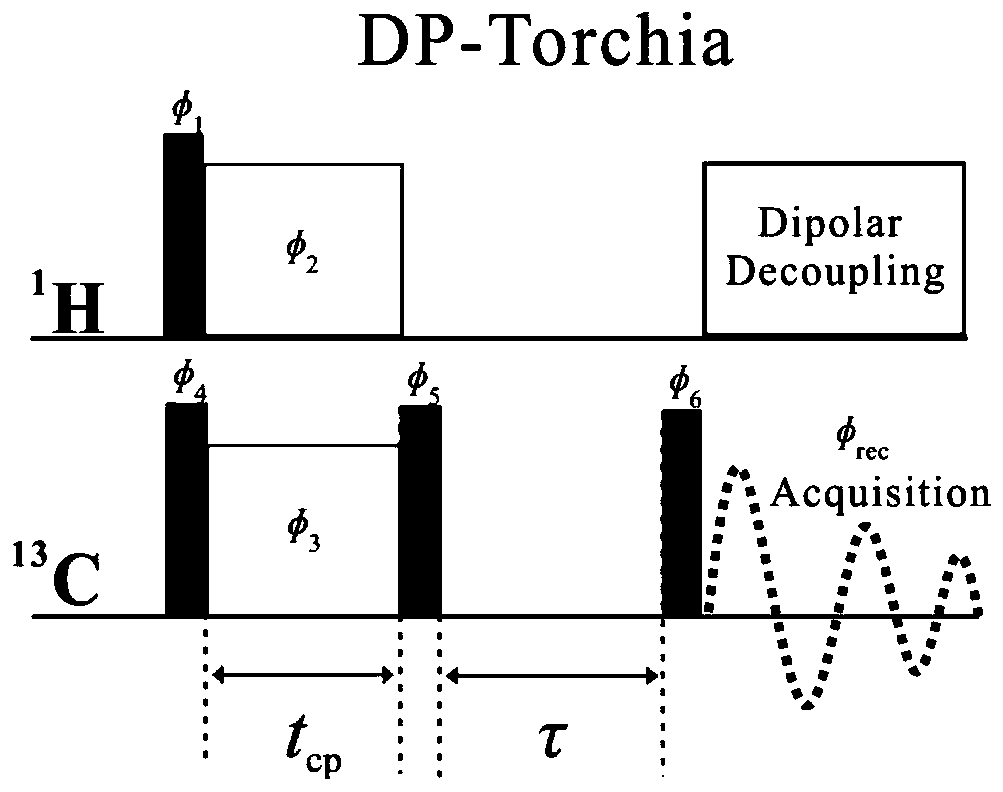Method and device for measuring spin lattice relaxation time
A technology of relaxation time and spin lattice, which is applied in the analysis of nuclear magnetic resonance, etc., can solve the problems of unsuitable molecules, reduced polarization transfer efficiency, and inability to achieve measurement, etc., and achieves a high universal effect
- Summary
- Abstract
- Description
- Claims
- Application Information
AI Technical Summary
Problems solved by technology
Method used
Image
Examples
example 1
[0087] Example 1: In an alanine / adamantane blend 13 CT 1 Determination of value
[0088] The reason for choosing the alanine / adamantane blend as the sample system is that alanine is a 1 Rigid molecules with H atoms are more suitable to be determined by Torchia experiment 13 CT 1 value; and according to the structural characteristics of adamantane molecules, its molecules have high mobility, so its 13 C- 1 The dipole coupling effect of H is relatively weak, so it is more suitable to use IR (inversion-recovery method) to test its 13 CT 1 value. Therefore, alanine / adamantane was selected as a system with large differences in molecular local mobility to evaluate the accuracy of DP-Torchia.
[0089] The specific experimental operation is: put the alanine / adamantane blend solid powder into the solid NMR sample tube and place it in the probe, retrieve the DP-Torchia pulse sequence file, set the appropriate experimental parameters, and collect the DP-Torchia spectrum . After...
example 2
[0094] Example 2: In polyvinyl alcohol / polytetrafluoroethylene blends 13 CT 1 Determination of value
[0095] The reason for choosing polyvinyl alcohol / polytetrafluoroethylene blend as the sample system is that polyvinyl alcohol is 13 C- 1 H system, there is heteronuclear dipole coupling effect, it is more suitable to use Torchia experiment to determine its 13 CT 1 Value; PTFE system does not contain 1 H, so there is no 13 C- 1 H dipole coupling effect, in the traditional method, IR experiments are generally used to determine the groups 13 CT 1 value. However, this method can simultaneously determine the 1 H / not included 1 Each group of the blend system of H 13 CT 1 value, so polyvinyl alcohol / polytetrafluoroethylene was selected as the 1 H / not included 1 H blend system to evaluate the performance of DP-Torchia.
[0096] The specific experimental operation is: put the solid powder of polyvinyl alcohol / polytetrafluoroethylene blend into the solid NMR sample tube...
PUM
 Login to View More
Login to View More Abstract
Description
Claims
Application Information
 Login to View More
Login to View More - R&D Engineer
- R&D Manager
- IP Professional
- Industry Leading Data Capabilities
- Powerful AI technology
- Patent DNA Extraction
Browse by: Latest US Patents, China's latest patents, Technical Efficacy Thesaurus, Application Domain, Technology Topic, Popular Technical Reports.
© 2024 PatSnap. All rights reserved.Legal|Privacy policy|Modern Slavery Act Transparency Statement|Sitemap|About US| Contact US: help@patsnap.com










